Oxycodone addiction can rob you of your health, your dignity, and your hope for a better tomorrow. At Blue Ridge Mountain Recovery Center, you will reconnect with your best self, and begin to build the foundation for a more promising future.
What is Oxycodone Abuse
Learn More About Oxycodone Abuse
Oxycodone, also known as “Oxy,” and under its brand name, OxyContin, is a powerful opiate narcotic used for moderate-to-severe chronic pain control. Oxy has been a blessing for many individuals whose pain remained unmanaged for many years as the time-release formula of the narcotic allows for continued pain relief. While most individuals who are prescribed OxyContin to manage their pain disorders use the medication as directed, there are a number of individuals who find the euphoria produced by a strong opioid narcotic highly desirable and begin to abuse this prescription medication.
Prescription medication abuse is using a prescription medication for non-medical purposes, and many people who abuse prescription drugs choose narcotics. Narcotic pain relievers such as oxycodone provide, along with pain relief, the user with pleasurable euphoric feelings. Individuals who abuse Oxy may begin the abuse by enjoying the euphoria it induces and later find it is a welcome way to self-medicate away feelings of sadness and emotional pain. Those who abuse OxyContin often crush the pills in order to snort or inject the substance directly into the bloodstream, producing a far greater high.
Oxycodone use results in the development tolerance at a faster rate than many other opioid substances. This means the need to increase the amount of Oxycodone over the period of a week or two and continue increasing the dose at regular rates is necessary to obtain the pleasurable effects originally experienced. This fast developing tolerance and subsequent increase in amount taken also can lead the individual to becoming addicted very quickly.
In September 2013, the FDA approved manufacturing of an abuse-deterrent formula of Oxycodone which has the same long-lasting pain control properties but does not allow the same effects if the medication is crushed as done by many addicts. This formulation attempts to reduce the risks for overdose and death associated with using Oxy in a manner it was not intended for.
While most individuals who are prescribed OxyContin to manage long-term and chronic pain, do so without becoming addicted, certain individuals become rapidly addicted to Oxy. Many of these Oxy addicts use other substances such as alcohol or benzodiazepines in order to achieve an even greater high which carries a far more substantial risk to the individual’s health and emotional well-being.
Statistics
Statistics on Oxycodone Abuse
Research suggests that 9% of Americans will abuse an opiate at some point in their lives. Newly-diagnosed cases of opiate abuse over a 12-month period is estimated at 0.37%. The Department of Justice has reported more that 13 million Americans have used oxycodone for nonmedical recreational purposes or have become addicted to the substance.
Causes
Causes of Oxycodone Abuse & Addiction
Several causes for oxycodone addiction have been hypothesized, largely based upon abuse of other opiate narcotics. These causes may include:
Genetic: As with most substance use disorders, individuals with a family history of substance use disorders are at increased risk for developing one. Those with a family history of opioid use disorders have a greater likelihood of developing an oxycodone use disorder.
Brain Chemistry: Oxycodone, like all opiates, have strong effects on pleasure inducing chemicals in the brain, stimulating the brain areas responsible for releasing these chemicals and increasing the amount that is circulating in the brain.
Environmental: When individuals feel overwhelmed by life stressors that seem to pile up and which they can’t seem to cope with before another problem comes along, it is normal for anxiety and fear to spike. Stress also creates muscle tension and pain. Oxycodone decreases all these negative symptoms and individuals continue to take it as they are reluctant to return to their previous level of distress.
Psychological: Many OxyContin addicts are attempting to self-medicate the symptoms of an undiagnosed or untreated mental illness. The high from Oxy can temporarily relieve the depression associated with depressive disorders or the anxiety associated with anxiety disorders. Unfortunately, abusing Oxy to treat a mental health condition often leads to addiction, further compounding the problems associated with mental illnesses.
Co-Occurring Disorders
Co-Occurring Disorders and the Complexity of Oxycodone Addiction
While further evaluation of the specific factors related to Oxy addiction are ongoing, OxyContin addiction often occurs with other disorders and often needs residential treatment. Co-occurring disorders include:
- Chronic pain conditions
- Poor mental and physical health
- Depressive disorders
- Anxiety disorders
- Bipolar disorder
- Schizophrenia
- Substance abuse disorders
- Antisocial personality disorder
- Post-traumatic stress disorder
Signs & Symptoms
Signs and Symptoms of Oxycodone Abuse
Dependent upon the mode of abuse, the length of time the drug is abused, and the amount of Oxy used, the symptoms of Oxycodone addiction may vary. Some of the most common symptoms of oxycodone addiction include:
Mood:
- Depression
- Anxiety
- Mood swings
- Agitation
- Restlessness
- Anger
- Irritability
- Easily frustrated
- Pleasure
- Sense of emotional wellbeing
Behavioral:
- Doctor shopping to obtain several oxycodone prescriptions
- Resorting to lying or stealing in order to obtain more of the substance when you are unable to obtain it legally
- Robbing pharmacies
- Stealing or borrowing narcotics from friends and loved ones
- Purchasing Oxy on the street when unable to obtain a prescription
- Forging prescriptions
- Hiding or secretly using the substance
- Hiding the substance in different places
- S0cial isolation
- Financial problems
- Interpersonal relationship problems
- Drowsiness
- Increased ER visits with vague complaints of pain
Physical:
- Phantom pains especially in the arms, legs, feet and hands
- Respiratory depression
- Pinpoint pupils
- Weight loss
- Hypotension
- Constipation
- Jaundice
- Liver damage
- Kidney damage
- Withdrawal
- Tolerance
- Nausea and vomiting
- Headaches
- Itchy skin
- Decreased sex drive
- Reduction of pain
- Seizures
- Coma
- Death
Psychological:
- Inability to pay attention
- Memory problems
- Disorganized thoughts
- Alcoholism or other substance abuse
- Constant concern you will be unable to obtain more of the substance when you need it
- Becoming pre-occupied with thoughts of the substance
- Hallucinations
- Delusions
- Psychosis
- Feeling restless
- Risk of suicide
Effects
Effects of Oxycodone Addiction
The effects of addiction to opiate narcotics such as Oxycodone can affect nearly every aspect of an addict’s life. Some of the most common effects of oxycodone addiction are:
- Nausea
- Dizziness
- Loss of appetite
- Interpersonal relationship problems
- Financial problems
- Incarceration
- Dry mouth
- Tolerance
- Liver damage
- Breathing Problems
- Difficulty swallowing
- Sleep apnea
- Respiratory arrest
- Circulatory problems
- Low blood pressure
- Headache
- Shock
- Death from overdose or suicide
Withdrawal
Withdrawal Symptoms of Oxycodone Addiction
Withdrawal symptoms of Oxycodone (Oxycontin) are similar to withdrawal from other opiate narcotics. Withdrawal symptoms are generally unpleasant and any attempts to cut down the amount of Oxy used or the frequency in which it is abused should be discussed with a physician to ensure withdrawal is safe and effective. Withdrawal symptoms from OxyContin may include:
- Depression
- Anxiety
- Insomnia
- Nausea and vomiting
- All-over body pain
- Muscle aches
- Abdominal cramping
- Diarrhea
- Runny eyes and nose
- Extreme sweating
- Tremors
- Shakiness
- Brain fog
- Seizures
- Suicidal ideations












